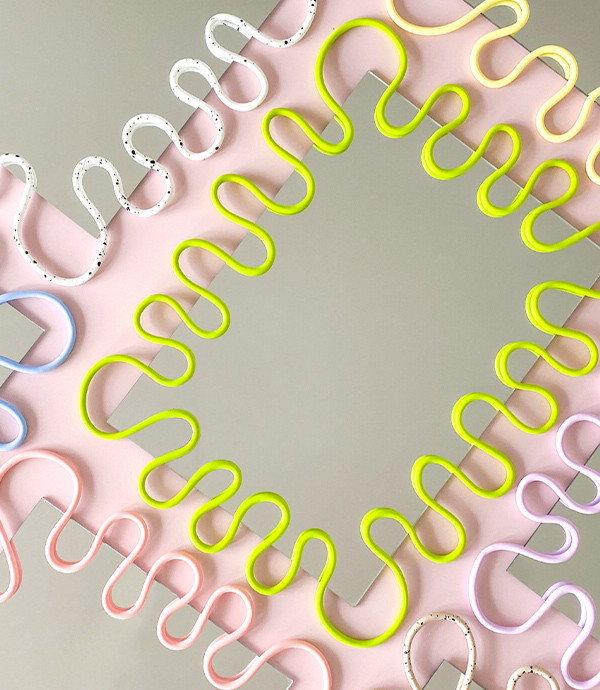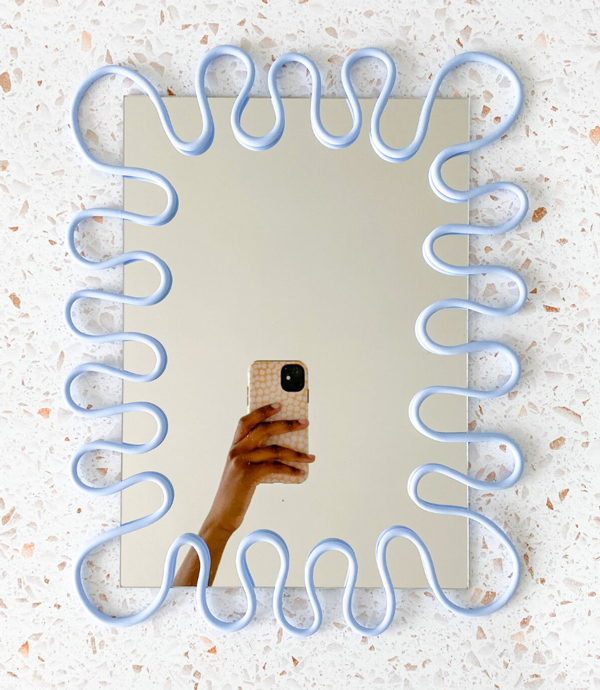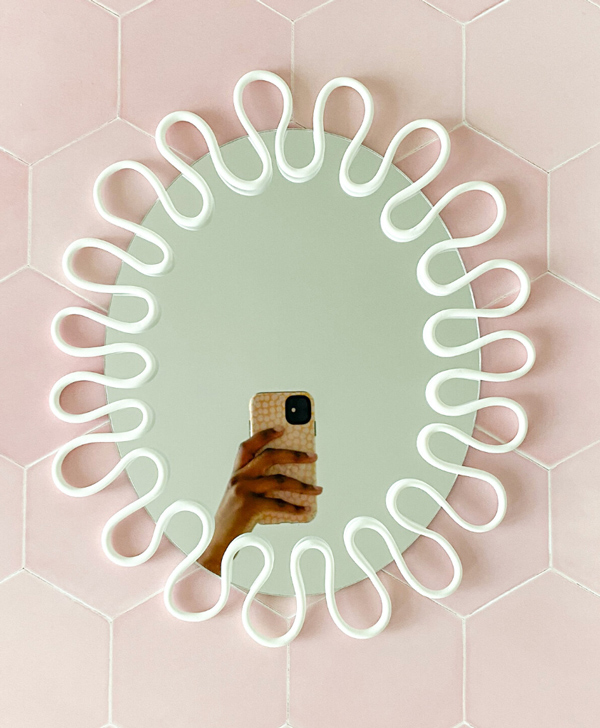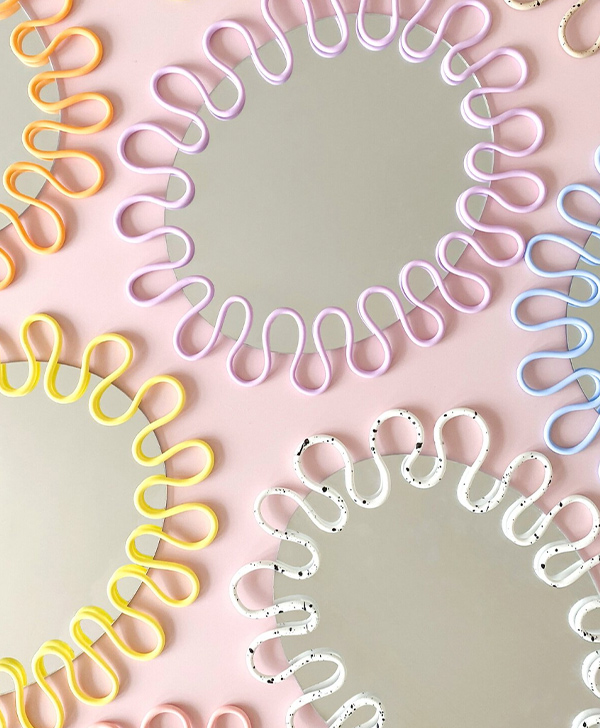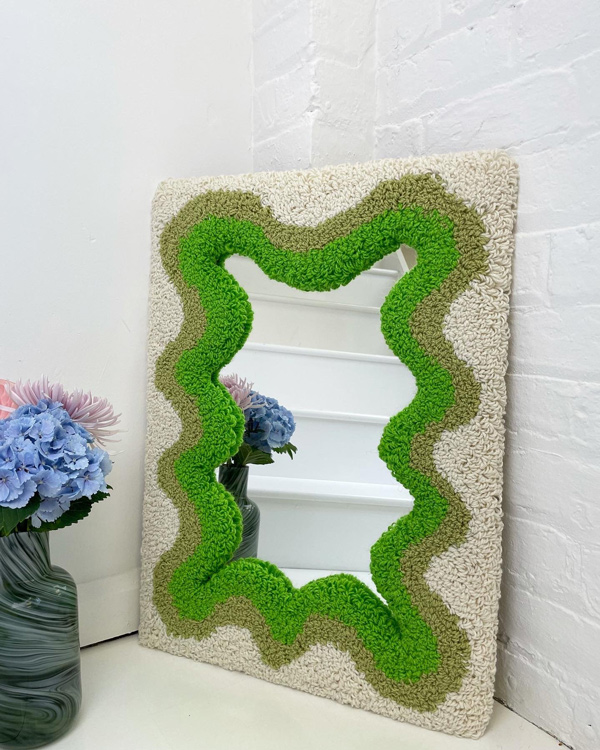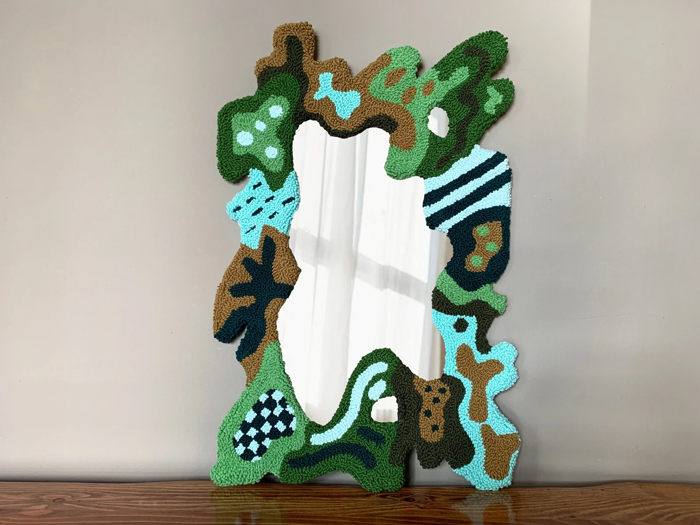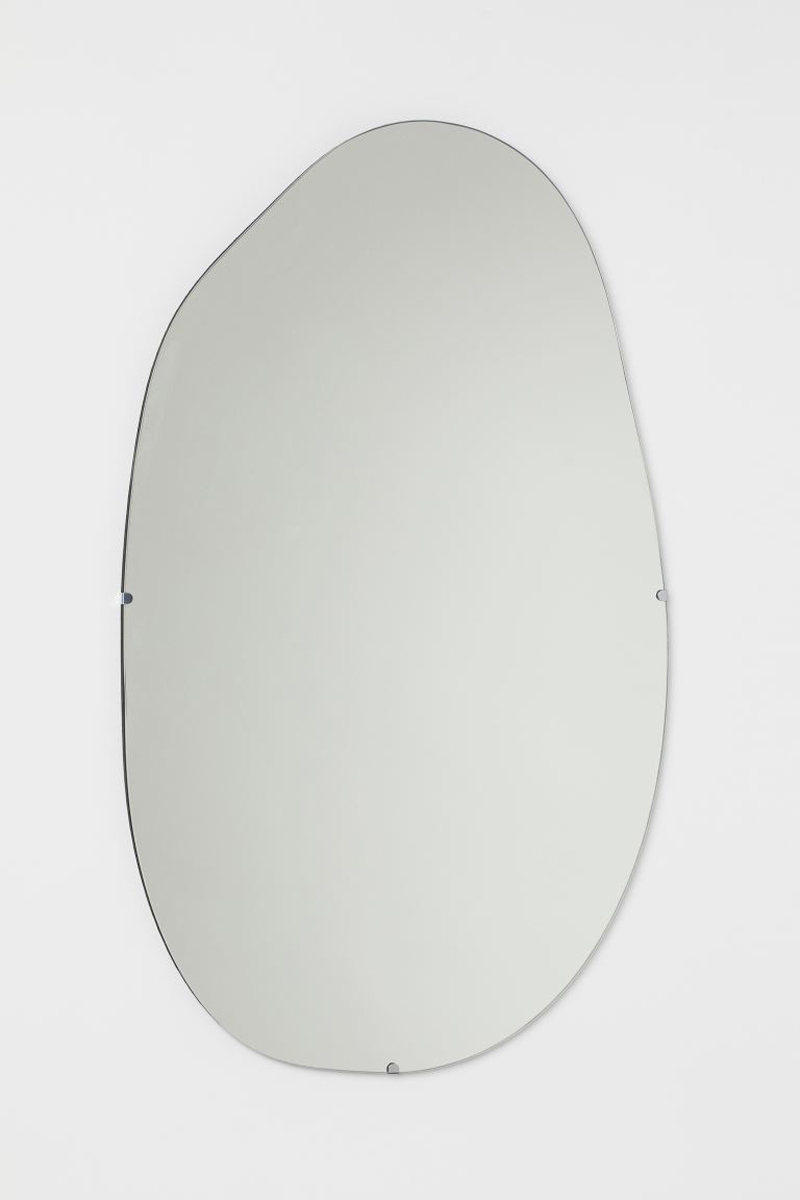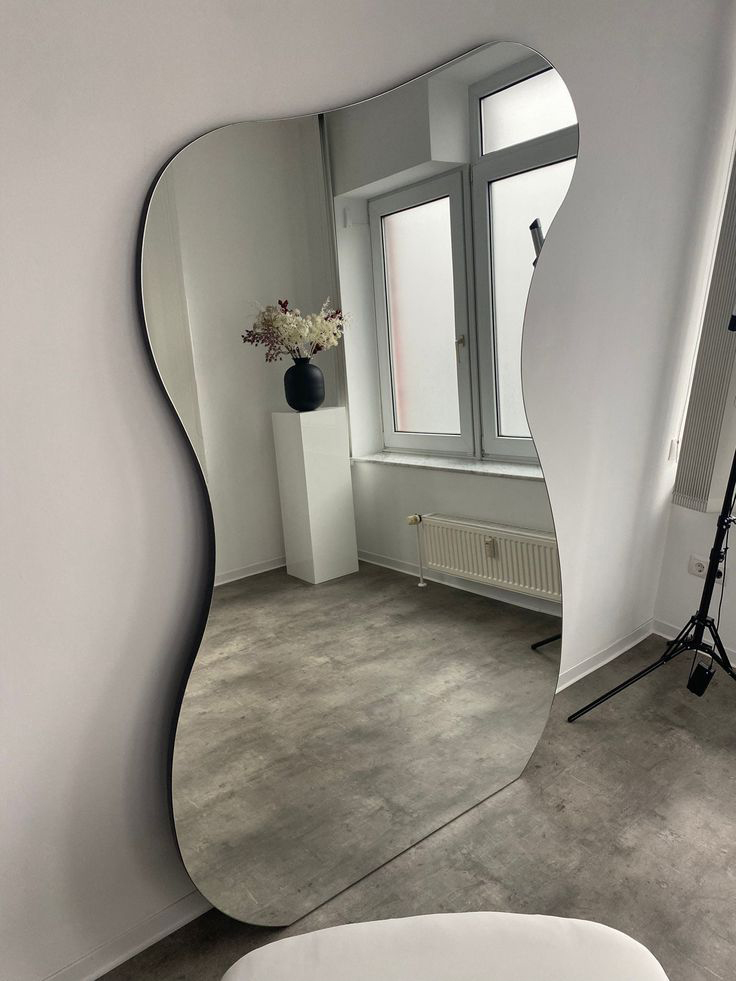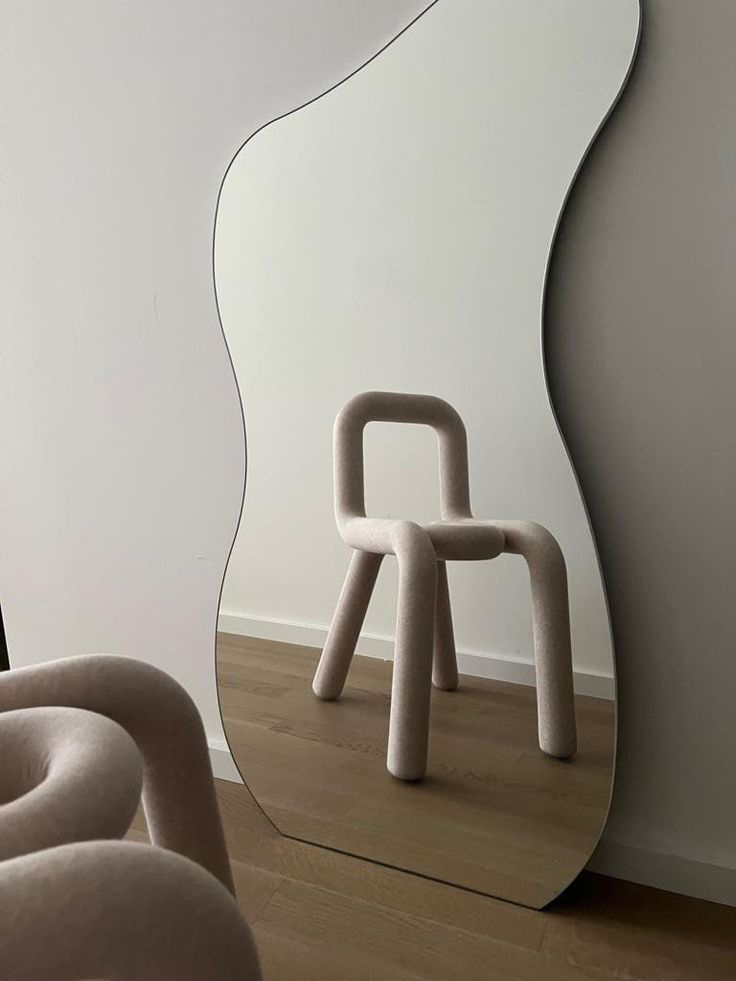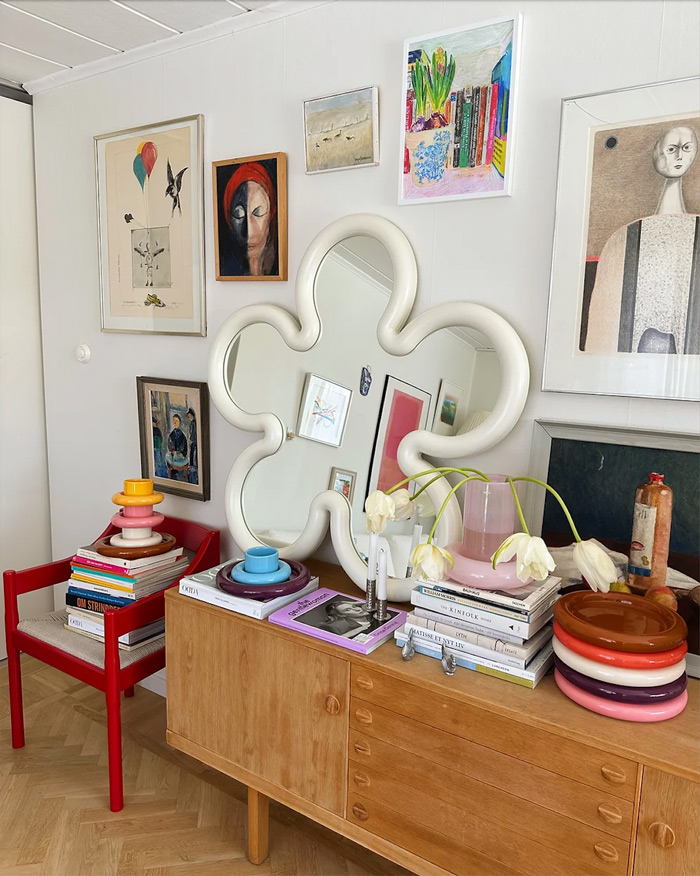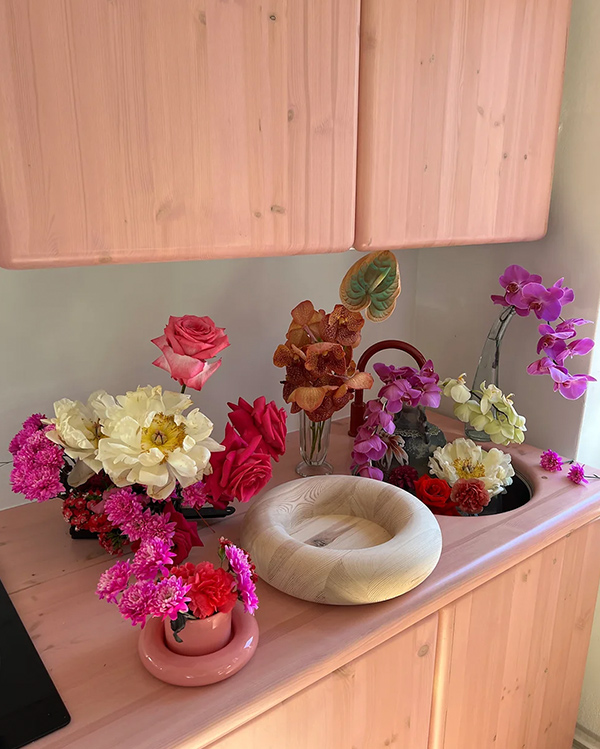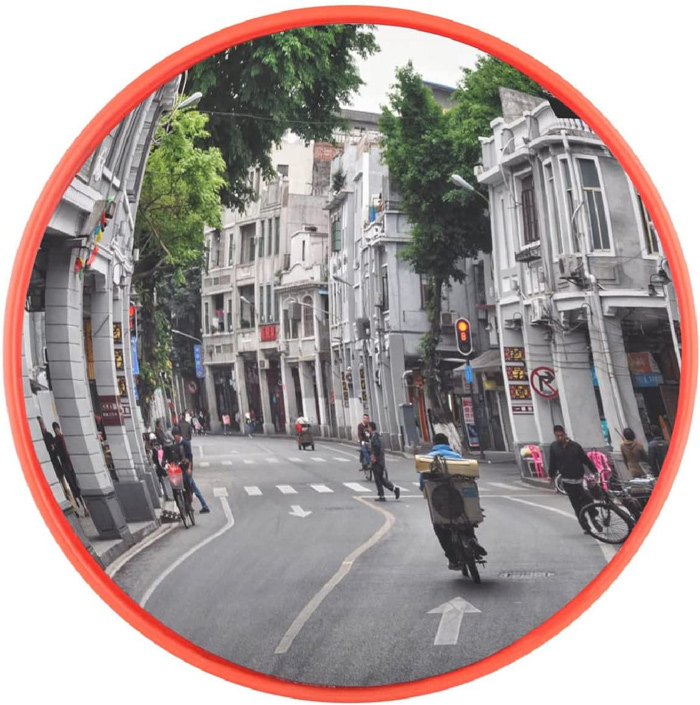Blob mirror DIY tutorial and 5 other funky mirrors you’ll need this Spring 2023
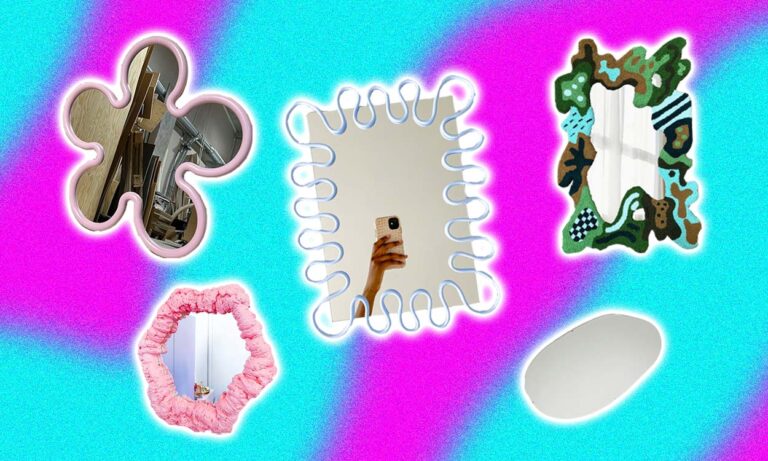
Currently sitting at the top of Pinterest’s monthly trends, the blob mirror is a modern, spring-inspired, and groovy take on our past COVID-induced obsession with the foam cloud mirror. Even if the visual search engine is not your go-to platform, chances are you’ve probably already spotted one of those little blobbylicious home accessories on your favourite influencer’s walls.
Luckily for you, blob mirrors have now been around for long enough that you should be able to make the distinction between you wanting one purely because they’re literally everywhere or because you know what you like when it comes to decorating your home and filling it with unique items.
That’s why we’ve not only done our research on how to DIY your own blob mirror to perfection, or where to buy one ready-made if you’re not much of an arts and crafts girlie, but we’ve also compiled a list of five other reflective options to pounce on in case you’re looking for something just as funky yet slightly different. You’re welcome.
1. How do you DIY a blob mirror?
Pick the right mirror
First things first, you’ll need to find a frameless mirror in the right size, depending on how big you want your final product to be. Most blob mirrors on Pinterest are fairly small, but if you’re in the mood for more of a statement piece, no one’s stopping you.
In terms of shape, again, most inspiration you’ll come across will probably feature rectangular mirrors, along with a few oval ones here and there, but you could also go rogue with a completely asymmetric base.
Trace your mirror’s shape
Once you’ve selected your perfect mirror, you’ll need to put it on a piece of paper that is big enough for you to trace its shape onto it. Once you’ve traced your mirror onto there, grab a pair of scissors and cut out your shape.
Roll your clay
Next, get your lockdown air-drying clay, or pop to the nearest Cass Art to buy some. Polymer clay, also known as oven-bake clay, is preferred because it won’t crack as easily as others.
Depending on how big your mirror is, and hence how long your squiggly shape will need to be, take a chunk of clay and start rolling it between your two palms. Once it’s looking thinner and string-like, continue rolling it out between one hand and a table. Don’t make it too thin or it will break, but don’t keep it too thick otherwise, the clay might crack as it dries.
Shape your clay string
Make sure that the string’s thickness is equal to its entire length so that you end up with a nice homogenous squiggle. When your clay string looks long enough, start folding it in soft waves over the paper cutout of your mirror shape.
What’s great about DIY-ing this yourself is that you’re free to play around with the shape that’s going to surround your mirror. Instead of bending it into waves, you can make them rounder or even spiky if that’s more your vibe. The choice is yours.
If you run out of clay midway, just roll another string and add it to the shape you’ve already put down on your piece of paper. When attaching it, make sure you smooth it out nicely with a tiny bit of water and your fingers.
Let it dry and paint it
Once you’re happy with its shape, you’ll need to let it dry for 24 hours. Check that it’s strong enough to paint, and select the colours you’d like to feature on the wavy shapes that will frame your mirror. Pastels seem to be an internet favourite, but you do you, boo.
Use acrylic paint to keep things simple—acrylic paint is great for decorative painting techniques and faux finishes. Let it sit for a couple of hours to make sure that it’s extra dry, and then place the newly painted frame on top of your mirror once more.
Make sure you’re happy with your frame’s position on top of your mirror, and simply add very small spots of strong glue to attach both together. It goes without saying that glue is only needed wherever the frame touches the mirror—don’t apply some on the edges hanging out, only to then realise that melting glue is poking out from behind it.
Clean up your final product, snap a few pictures to brag about your skills online, give yourself a pat on the back for a job well done, and that’s it, you’re done.
2. Where to buy blob mirrors online
Introducing Lotta Blobs, probably the one-stop shop for all things blob mirrors. Founded by Shantelle in the early months of the COVID-19 pandemic in 2020 as a way to occupy her mind and feed her love of creativity, the shop has since made a name for itself, with different mirrors being sold in shops like H&M.
Shantelle’s website reads: “My blobs are inspired by my interest in unusual homeware alongside my creative exploration through colours, fluidity and perfect imperfections. I design and assemble everything in my London home. My goal is to add a touch of colour and fun to everyone’s homes, one blob at a time!”
3. Five other trending mirrors
Tufted mirror
Alice Kelly is a tufting artist, designer, and founder of Al’s Place from North West England. Through her playful, abstract designs and bold approach to colour, she sets out to breathe new life into the practice and break the mould—quite literally. Her motto? Rugs don’t just belong on the floor.
Each piece she creates is unique and handmade in the UK using pure wool that’s been spun and dyed in England. Depending on your budget, check out Al’s Place’s mirrors, mini mirrors, and micro mirrors. Honestly, we’re obsessed.
You can also head to Etsy to find similar gems, like this green masterpiece from Handmade by Arinna:
Foam cloud mirror
We couldn’t list creative mirror alternatives without naming the one that occupied every second of our thoughts during the pandemic, the foam cloud mirror. If you’re somehow still unsure of what it is we’re talking about here, just have a quick look at this amazing DIY video that went viral on TikTok back in 2020:
@inalunaaa cloudyy 💗☁️ #diy #crafty #foryou
♬ Supalonely (feat. Gus Dapperton) - BENEE
Below are some more options we simply can’t take our eyes off:
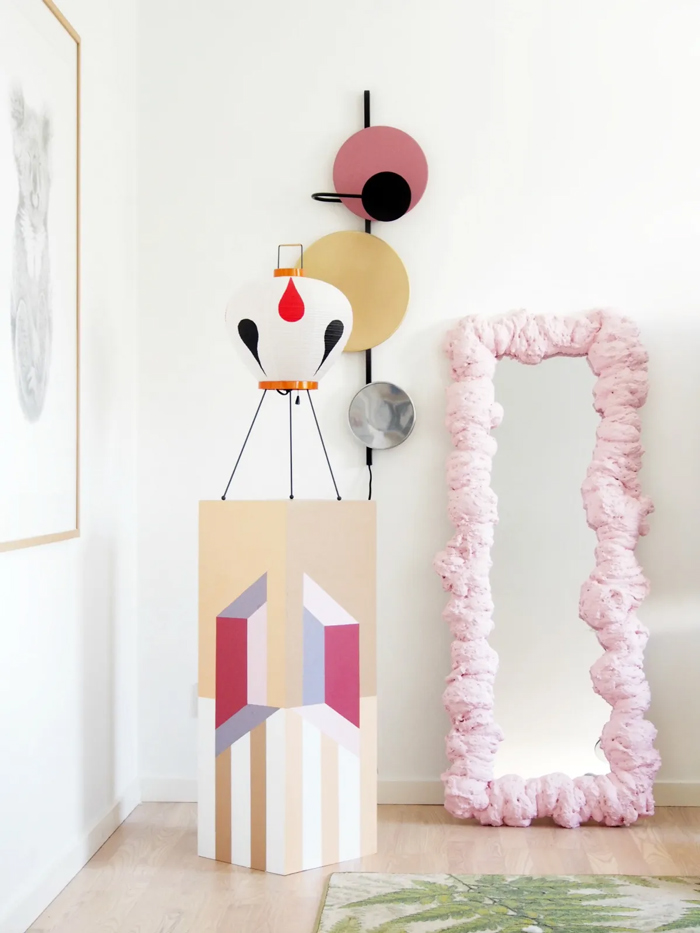
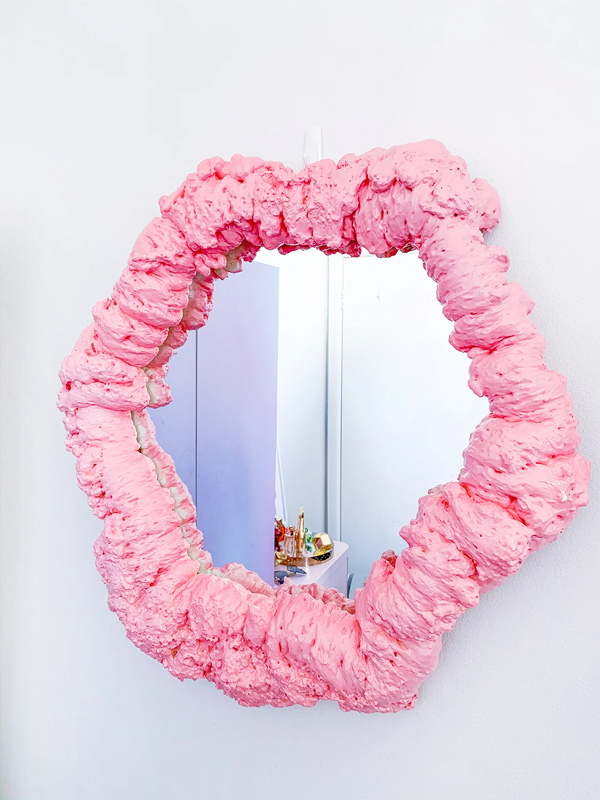
Asymmetrical mirror
If your home aesthetic is more on the minimalist side and your go-to colours aren’t as vibrant as some of the inspo pictured above, fear not, we didn’t forget about you. Whether you want a frame or not, H&M currently has some amazingly cheap asymmetric mirrors:
Never one to disappoint, Etsy also has some asymmetrical mirror options that won’t break the bank:
Flower mirror (or anything Gustaf Westman creates)
It doesn’t really matter exactly which of Swedish furniture designer Gustaf Westman’s products you’ve got your eye on—you’ll always be able to recognise his work in its curves, colours and playful elements. Everything he makes is unapologetically Scandinavian. Sadly for most of us, it also always comes with a hefty price tag.
Counting celebrities like Tyler, the Creator and Olivia Rodrigo among his fans, as well as countless fashion influencers, Westman’s signature designs have become staples in both well-designed homes and viral Instagram posts of them.
Although we’re specifically interested in one of his most recent creations, the Flower Mirror Mini, it should be noted that Westman first rose to prominence on the interior design scene through his now-infamous floor-length Curvy Mirror, which was imagined for Swedish fashion stylist Hanna MW, and quickly became the ultimate decor must-have.
View this post on Instagram
Everything Westman produces is made-to-order, including the Flower Mirror Mini, which currently comes in cream, pink, cobalt blue, light blue, green, dark green, red, and pale yellow—one for every day of the week, plus an extra!
Also, we know we’re here to talk mirrors, but just look how cute the rest of Westman’s designs are. To die for, honestly!
Traffic mirror
Now, this one might seem slightly rogue, but if your aesthetic is less soft girl and more normcore or even gorpcore, then we’ve got a really edgy yet cheap-as-heck mirror option for you. The trend of buying these round mirrors off Amazon—which are actually meant to be used as traffic mirrors—first started on TikTok, probably as a result of gen Zers love of taking selfies in the domed mirrors that hang in parking garages and supermarkets.
@belinabellwood let’s set up my traffic mirror together 🥹🥹 #foryou #fyp
♬ Do You Believe in Magic - The Lovin' Spoonful
It also doesn’t hurt that prices for these surprisingly squishy mirrors rarely go over £20. If you’re still not sure what we’re talking about here, these are often called blind-spot mirrors. They sometimes stick out from school buses, and are also used as safety or security mirrors, allowing attendants at grocery stores and tube stations to keep watch over a wide area.
@tastemadehome This traffic mirror trick looks good from all angles. 😉🪞#upcyling #diyproject #thriftflip #mirror #roomdecor
♬ Austin Millz Move Your Feet - Austin Millz
They are probably most accurately described as convex mirrors, but over on TikTok, they have become known as traffic mirrors. Regardless of what you want to call them, they’re super cute. Here’s a cheap one that features an orange frame which you can get delivered straight to your house:






